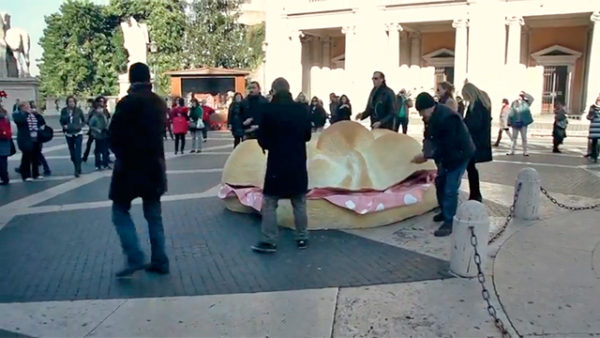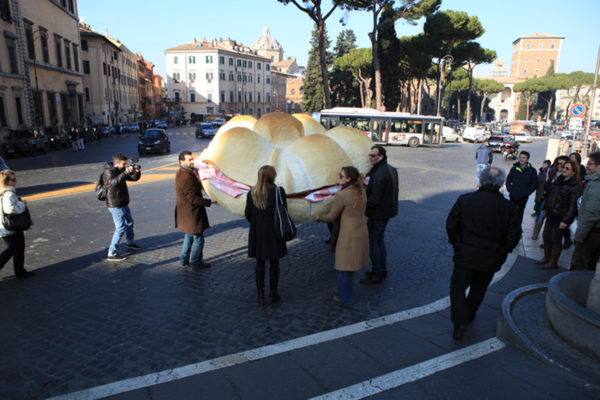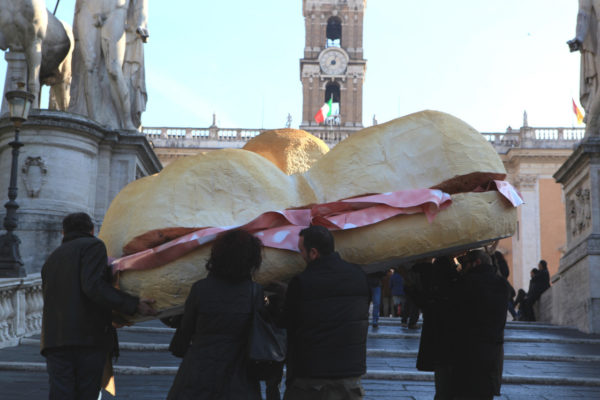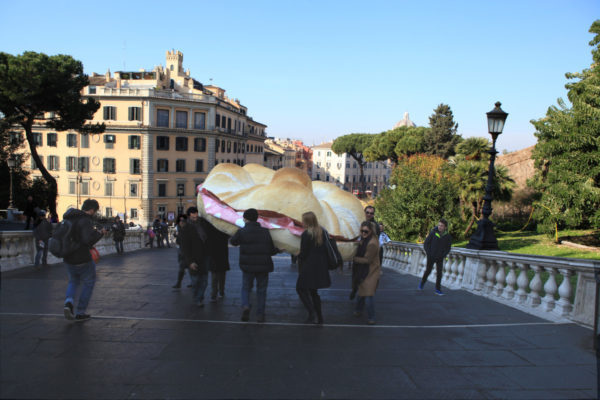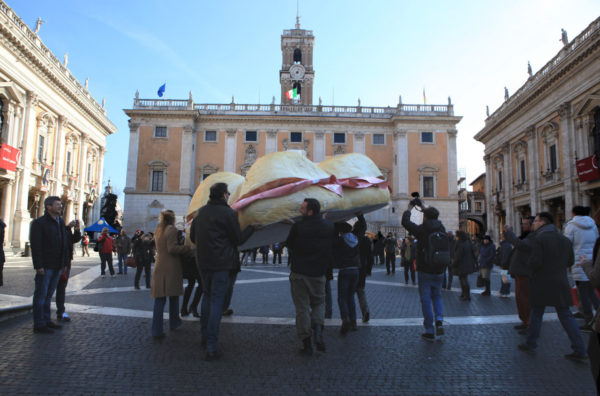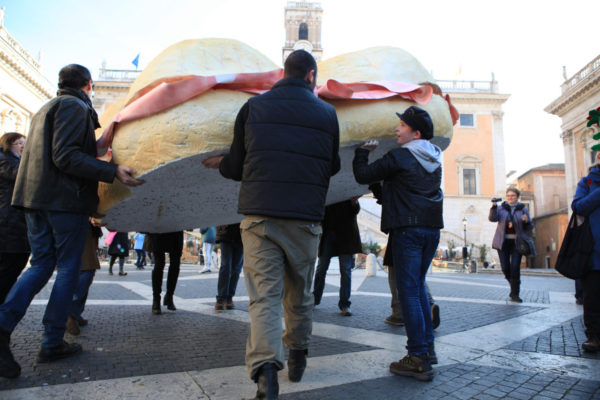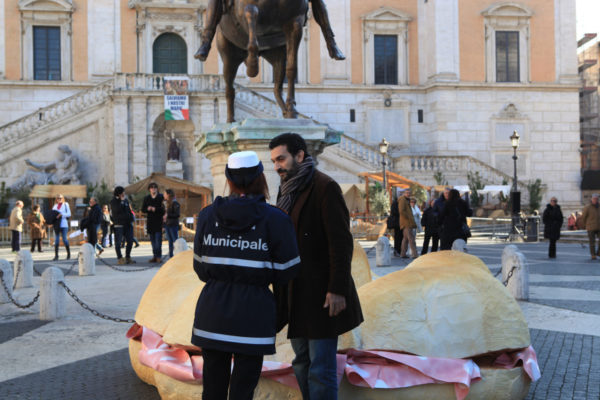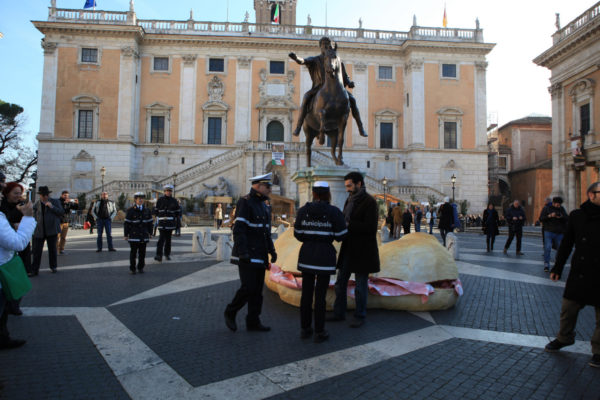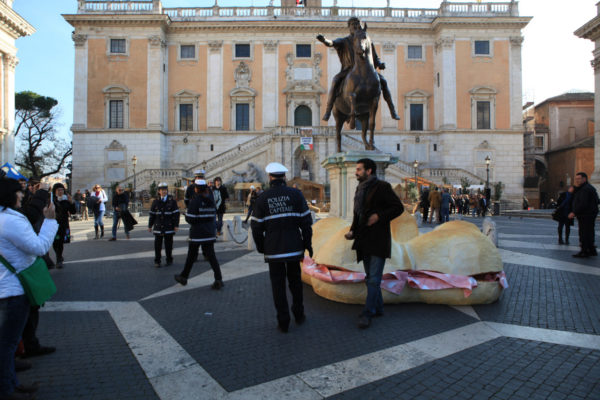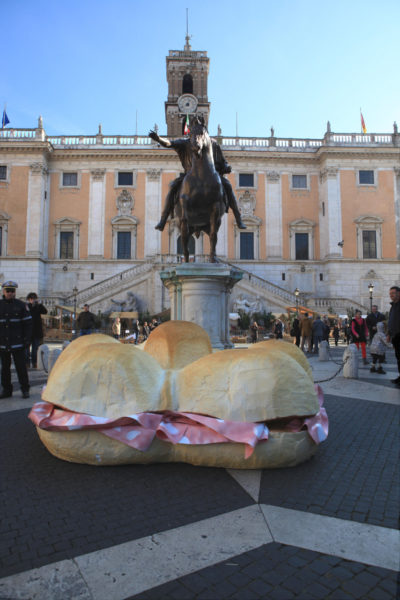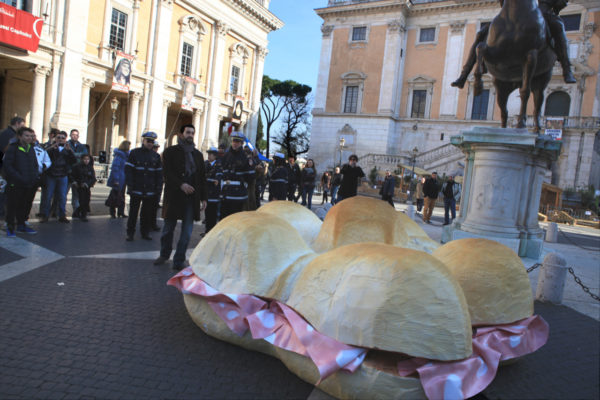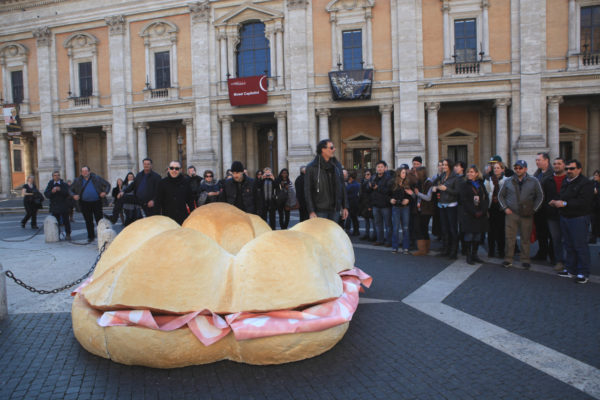Monumento al panino
Deposizione di un panino gigante sotto la statua del Marco Aurelio
Roma, Domenica 6 gennaio 2013, piazza del Campidoglio, ore 12.00
Una rosetta enorme farcita di abbondante mortadella sale le scalinate del Campidoglio per andarsi a sistemare al centro della piazza, sotto la statua del Marco Aurelio a cavallo.
E’ il monumento al panino, un regalo della Befana per Alemanno, un dono e una provocazione a rilanciare, polemicamente, l’ordinanza comunale dell’”anti-bivacco”, disposta il 1° ottobre 2012 a favore della pulizia nel centro storico di Roma e del decoro urbano.
Il panino è lì, in tutta la sua grossolana caricatura e pacchiana finzione, dedicato al Sindaco, a sottolinearne l’approccio grottesco e maldestro alla città nella sua globale amministrazione. Il panino è anche metafora casereccia della classe politica attuale, intrisa di prosaica volgarità e di basso profilo etico, o della più semplice atmosfera del “magna magna”, creatasi negli ultimi tempi in Italia e in particolare a Roma: è il cibo dei poveri vista la crisi, ma dei poveri di spirito, in questo caso.
Il monumento al panino omaggia qualcosa che non c’è più, una memoria perduta nel tempo e che vale la pena ricordare.
Non è tanto l’oggetto in sé, quanto lo spirito a cui era legato: quello dello spuntino di metà mattina che rallegrava i palati dei lavoratori romani.
Ora tutto questo suona a mo’ di disobbediente protesta, tanto più grande quanto più è grande il panino!
Monument to the Sandwich
Deposition of a giant sandwich under the statue of Marcus Aurelius
Rome, Sunday, January 6, 2013, Capitoline Hill square, 12:00 PM.
A huge sandwich filled with abundant mortadella climbs the steps of the Capitoline Hill to be placed in the center of the square, under the statue of Marcus Aurelius on horseback. It’s the monument to the sandwich, a gift from Befana to Alemanno, a gesture and a provocation to relaunch, polemically, the municipal ordinance of the “anti-bivouac,” issued on October 1, 2012, in favor of cleaning up the historic center of Rome and urban decorum. The sandwich is there, in all its gross caricature and flashy fiction, dedicated to the Mayor, to emphasize his grotesque and clumsy approach to the city in his overall administration. The sandwich is also a homely metaphor for the current political class, steeped in prosaic vulgarity and low ethical profile, or the simpler atmosphere of “magna magna,” created in recent times in Italy and especially in Rome: it is the food of the poor given the crisis, but of the poor in spirit, in this case. The monument to the sandwich pays homage to something that no longer exists, a memory lost over time and worth remembering. It’s not so much the object itself, but the spirit to which it was attached: that of the mid-morning snack that delighted the palates of Roman workers. Now all this sounds like a defiant protest, all the bigger the sandwich!
